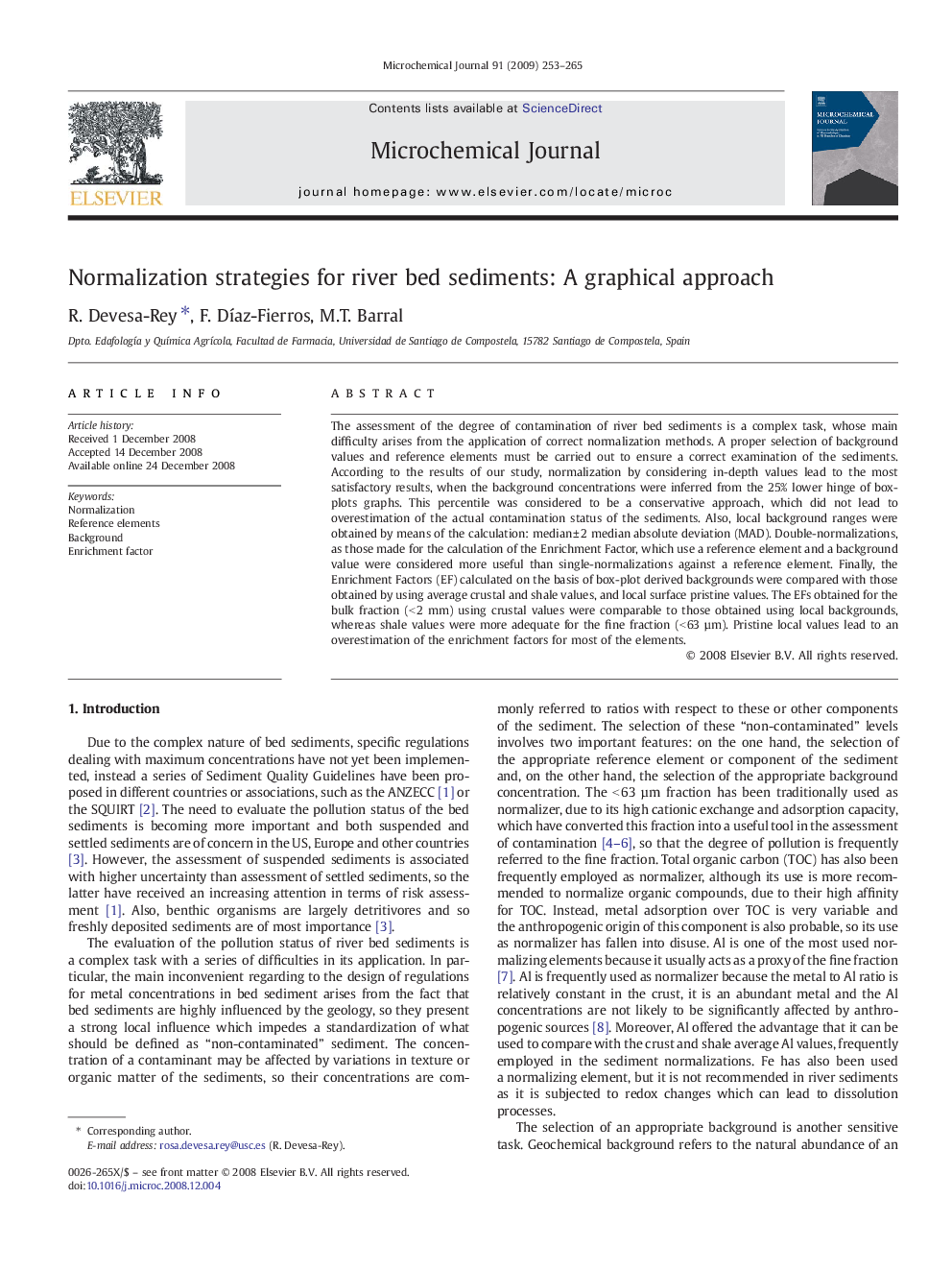| Article ID | Journal | Published Year | Pages | File Type |
|---|---|---|---|---|
| 1228170 | Microchemical Journal | 2009 | 13 Pages |
The assessment of the degree of contamination of river bed sediments is a complex task, whose main difficulty arises from the application of correct normalization methods. A proper selection of background values and reference elements must be carried out to ensure a correct examination of the sediments. According to the results of our study, normalization by considering in-depth values lead to the most satisfactory results, when the background concentrations were inferred from the 25% lower hinge of box-plots graphs. This percentile was considered to be a conservative approach, which did not lead to overestimation of the actual contamination status of the sediments. Also, local background ranges were obtained by means of the calculation: median ± 2 median absolute deviation (MAD). Double-normalizations, as those made for the calculation of the Enrichment Factor, which use a reference element and a background value were considered more useful than single-normalizations against a reference element. Finally, the Enrichment Factors (EF) calculated on the basis of box-plot derived backgrounds were compared with those obtained by using average crustal and shale values, and local surface pristine values. The EFs obtained for the bulk fraction (< 2 mm) using crustal values were comparable to those obtained using local backgrounds, whereas shale values were more adequate for the fine fraction (< 63 µm). Pristine local values lead to an overestimation of the enrichment factors for most of the elements.
